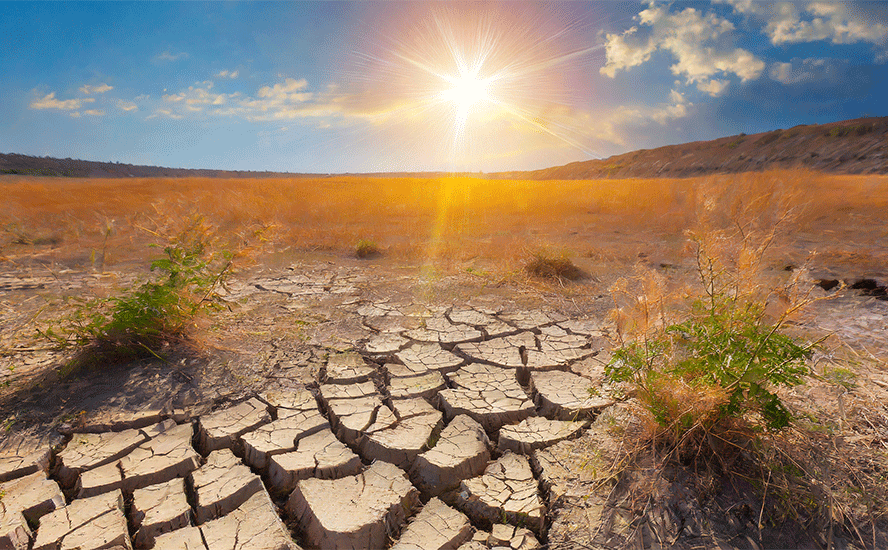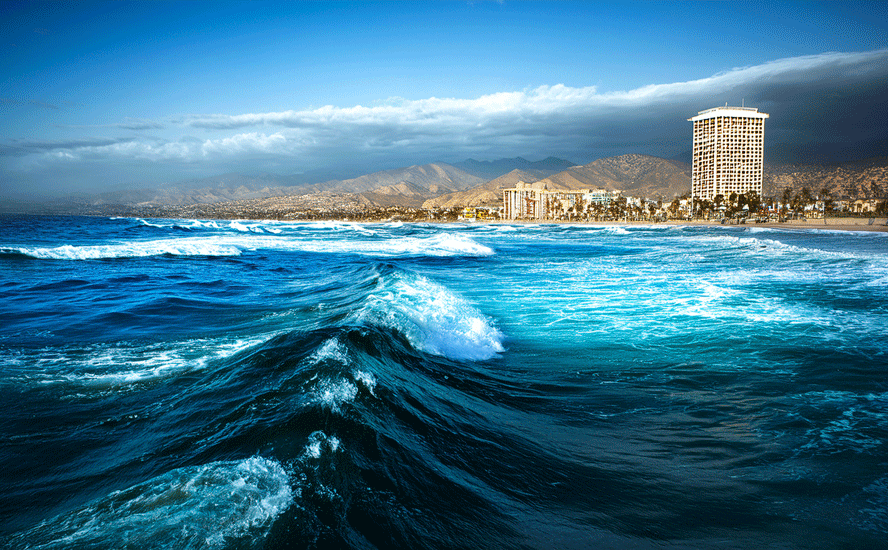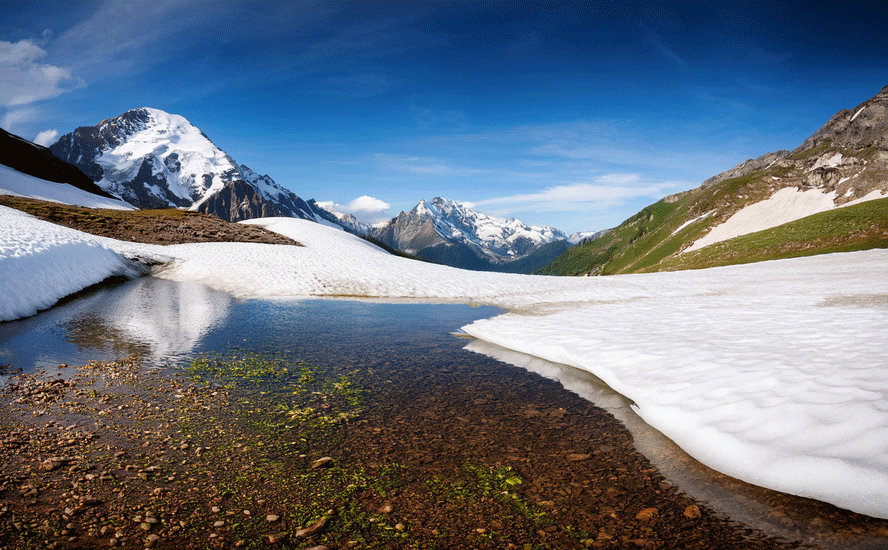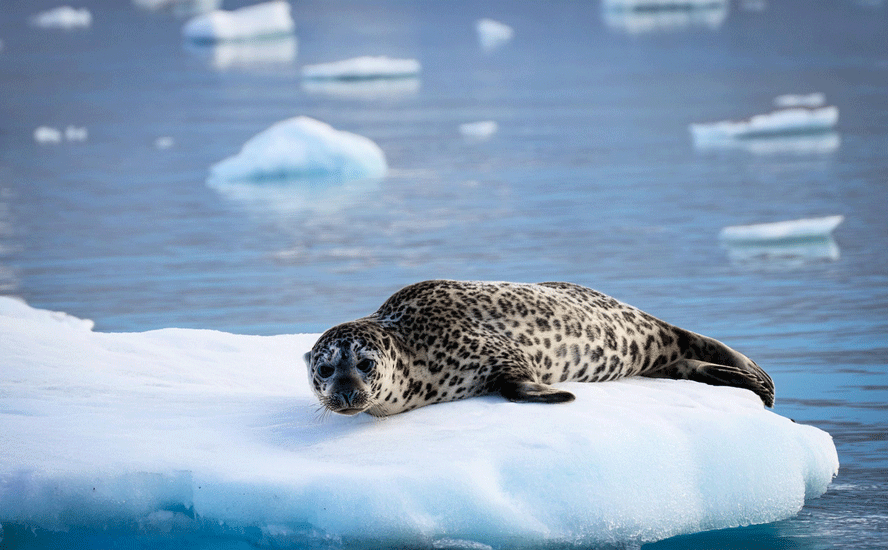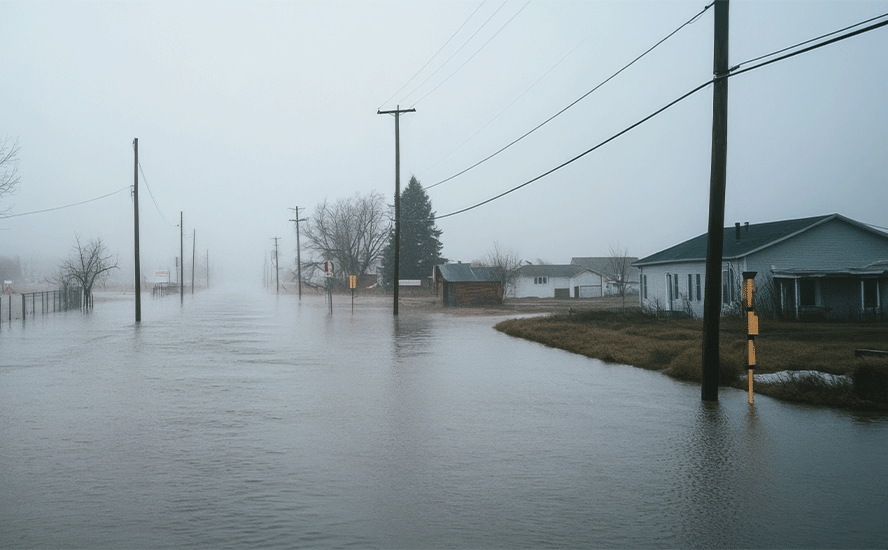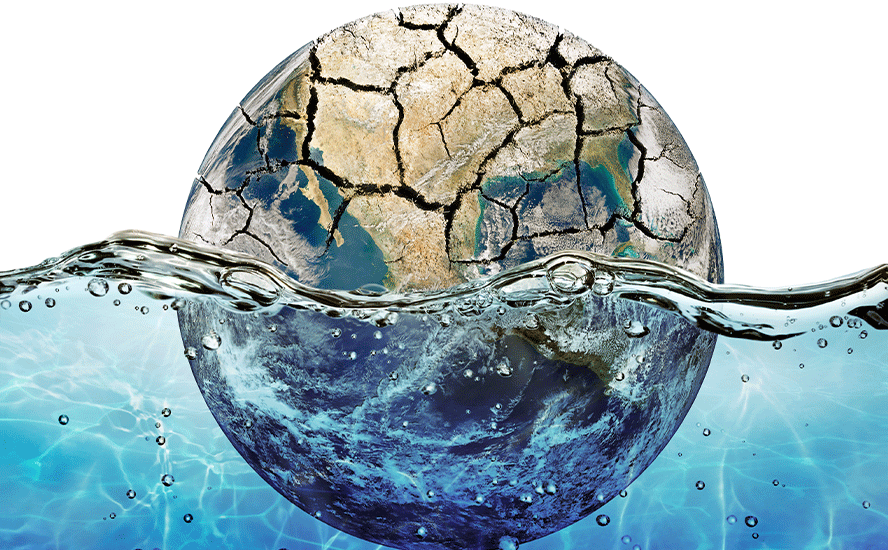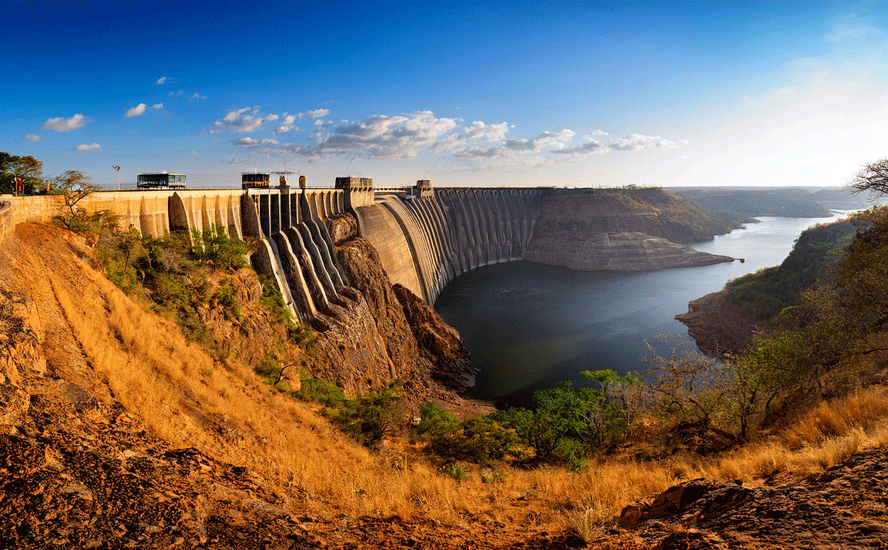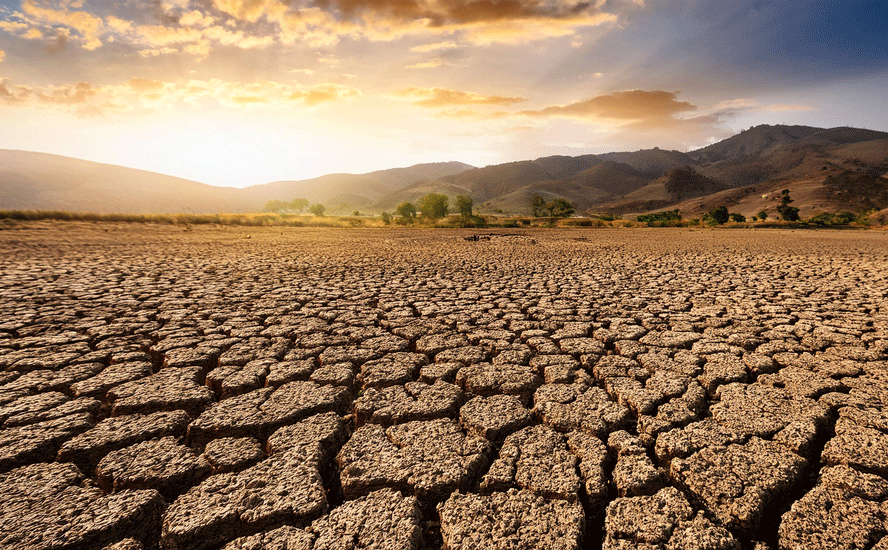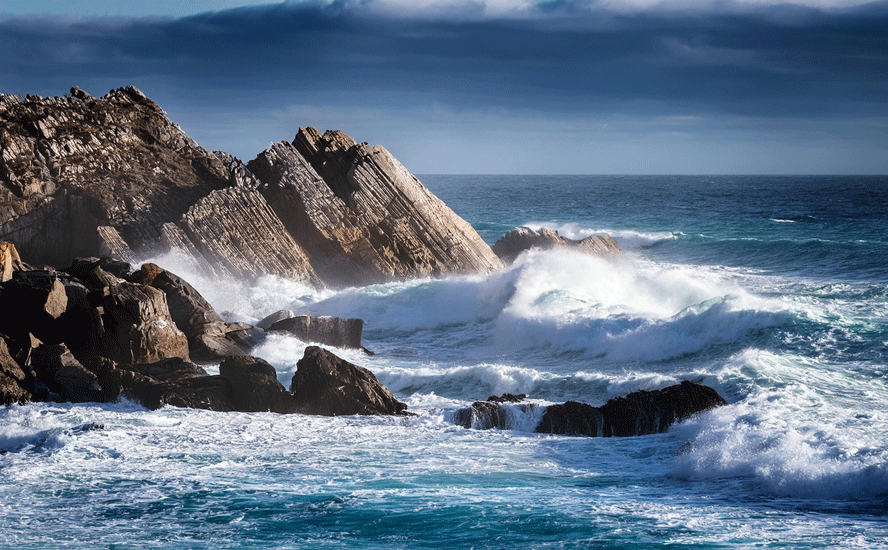With El Nino boost, scientists say 2024 will be much worse than record-setting 2023 – Richard Mills
2024-01-09
If you thought 2023 was hot, just wait. Scientists are warning that temperatures may climb even higher in 2024, due to a combination of global warming and El Nino.
El Nino
It’s been well-established that warmer, or colder-than-average ocean temperatures have an influence on weather. According to the National Oceanic and Atmospheric Administration (NOAA), El Nino causes the Pacific jet stream to move south and spread further east. During winter, this leads to wetter conditions than usual in the southern US and warmer and drier conditions in the north.

The World Meteorological Organization officially confirmed the arrival of El Nino on July 5. El Nino is shorter-lived than La Nina, usually lasting nine months to a year versus a few years for the cooling phenomenon.
However, the second year of an El Nino is often warmer than the first. That’s what happened during the last El Nino cycle, which began in early 2015, peaked in December, and faded in June 2016. The lingering El Nino from January to June made 2016 a record year for warmth.
The current El Nino is considered strong, and could peak in the coming weeks or months. If the same thing happens this year as in 2016, it could mean record warmth that has persisted over the past six months could surge even higher during the first half of 2024. A Washington Post article states that the abnormal sea surface warmth and storms it brings to the central and eastern Pacific Ocean, leads to drought in other parts of the world including southeast Asia and southern Africa.
“That sets the stage for higher-than-normal temperatures over land,” perhaps peaking around February,” said Kevin Trenberth, a climate scientist at the National Center for Atmospheric Research. “I expect this to be the case at least for the first 6 months of 2024.”
Another negative El Nino impact is on coral reefs. A recent paper in the Journal ‘Science’ warned about the possibility of mass coral bleaching in the Pacific Ocean — similar to what happened in 2016, when the Great Barrier Reef suffered its worst bleaching ever.
A lingering El Nino is likely to mean a drying trend in places accustomed to rainfall and vice versa, with implications for agriculture. The United Nations’ Food and Agriculture Organization is reportedly concerned about food insecurity this year due to droughts in East Asia, southern Africa and Central America.
El Nino could also bring dry weather to the Amazon, which is already experiencing severe drought. Good news might be coming to the drought-stricken southern United States, which is expected to be wetter and cooler than normal this year. On the other hand, the Pacific Northwest region of the US and Canada could repeat last year’s heat wave, which ignited fires in early May. Bloomberg quoted a professor of environmental geography at the London School of Economics saying that region could see another severe summer fire season.
2023, it should be noted, was the worst year for forest fires in both Canada and British Columbia. In September, CBC News reported more than 15 million hectares were destroyed by fire across the country, doubling the previous record, 7.6 million ha in 1989.
Wildfires burned 24,900 square kilometers in BC, nearly double the 2018 record of 13,600 square km. That’s an area almost the size of Vancouver Island. Major fires included Donnie Creek, the province’s largest-ever blaze at a staggering 5,800 square km.
The Ministry of Emergency Management and Climate Readiness said that since 2017, nearly 140,000 people in British Columbia have been impacted by wildfire evacuation orders and alerts, with 33,445 forced out of their homes in 2023.
The Vancouver Sun noted that as of Dec. 28, the BC Wildfire Service counted 106 fires still burning. Called “zombie fires”, they go underground and smoulder through the winter.
Continued dry conditions across regions like Prince George, in the central BC Interior, hold the risk of zombie fires roaring back to life come spring, potentially leading to back-to-back seasons of extreme wildfire.
As for what comes next, it all depends what happens after El Nino fades. The options are neutral conditions, a switch to La Nina, or a return to El Nino.
Something else to consider, is “We’ve never had a big El Niño like this on the background of global warming,” says Adam Scaife at the United Kingdom’s Met Office.
Bloomberg states, Over the past few decades, the climate change-El Niño double whammy has produced a string of record hot years. According to one study, extremes between El Niños and La Niñas have intensified roughly 30% since 1960 compared to the six decades prior, with global warming likely contributing a third of that.
2023 scorcher
Temperatures have been more than 1 degree C above pre-industrial levels for a decade.
The last eight years have been the hottest on record, with 2023 the warmest ever.
October 2023 hit a world heat record. According to EU’s Copernicus Climate Change Service (C3S), October’s previous 2019 record was broken by 0.4C, “which is a huge margin,” said C3S Deputy Director Samantha Burgess.
Last year’s average temperature was about 1.4C higher than the pre-industrial era; early estimates suggest 2024 will be between 1.3 and 1.6 degrees higher.
Bloomberg notes that almost every month in 2023 was warmer than the 1991-2020 average. After El Nino started, monthly heat records were shattered in June, July, August, September, October and November. July was the warmest month ever observed and July 6 was the hottest day on record.

According to Britain’s Met Office, a lingering El Nino in 2024 could be enough to push average planetary temperatures more than 1.5 degrees above pre-industrial levels — considered the point of no return for runaway global warming.

Canadian journalist Gwynne Dwyer, a specialist on geopolitics and military matters, reports one climate scientist saying that “The 1.5-degree limit is deader than a door nail, and the scenarios you would need to stay under two degrees are just imaginary.”
Jim Hansen, writes Dwyer, “who has the distinction of being the man who went to the U.S. Congress in 1988 and persuaded them to take the new threat of climate change seriously,” says the world hit the 1.2 mark about two years ago, 2023 ended up around 1.4, and he expects 2024-25 will go up to 1.6, 1.7 with the El Nino boost. Even after El Nino fades, Hansen doesn’t expect temperatures to fall back to 1.2.
“It may go down to 1.4 or so, but because the planet is so far out of equilibrium it’s not going to drop much. So we’re already at sort of the 1.5 warming limit, and we’ve got plus two degrees in the pipeline by some time in the middle to late 2030s is my estimate.”
Vancouver-area skiing finished by 2050
In the short-term, British Columbia is finally experiencing a taste of winter after basking in higher-than-normal temperatures throughout December, along with the rest of Canada.
“A strong low will bring heavy snow to B.C. through Tuesday, even in low-elevation areas. Travel conditions will deteriorate quickly,” The Weather Network reported on Monday.

The snowfall will provide some welcome relief to ski hills throughout the southern half of the province, that have been scraping by on bases of less than 100 centimeters during the time of year when base snow accumulations normally reach well above 200 cm.
However according to Michael Pidwirny, a UBC Okanagan prof who studies the impacts of climate change on North American ski resorts, if global warming continues, it’s only a matter of time before skiing on coastal mountains becomes a thing of the past. “Cypress, Grouse, Seymour? They’re finished by 2050,” he told Global News.
Another climate scientist at Simon Fraser University, John Clague, shared Pidwirny’s concerns. He observed that winter weather is starting one to two months later than it used to, cutting the ski season down significantly for operators and skiers alike.
“My view is that it’s going to be increasingly difficult economically for those mountains to operate as they have in the past, with the assumption that they have four months of snow that you can ski on,” he said.
“They’ll be lucky if they can get two good months out of this winter.”
Conclusion
Previous episodes of El Nino have led to drastic weather changes that ravaged some of the most productive regions of the world, leading to spikes in commodities. An International Monetary Fund paper found that non-fuel commodities have risen 5.3% in the first four quarters after the start of past El Nino cycles, with crude oil rising 13.9%.
How global warming and El Nino will affect commodities
The European Central Bank says food commodity prices could rise by up to 9% “if current El Nino conditions develop into a strong El Nino.” (the current El Nino is considered strong)
Historical estimates… suggest that a rise in ocean surface temperatures corresponding to the transition from a normal to a strong El Niño would raise global food commodity prices for up to two years, with a 9% peak in price increases occurring 16 months after the start of the strong El Niño episode.
But this time, with global warming, El Nino’s knock-off effects could be even bigger than before. Remember, 2023 was a record year for heat; 2024 could be even hotter. El Nino is an ocean-based climate phenomenon but it brings dry weather to land surfaces. There are concerns that El Nino could bring drought to East Asia, southern Africa and Central America, and make the existing drought in the Amazon worse. The southern US could get a reprieve from drought but the Pacific Northwest is expected to bake and burn, again.
Tell that to folks in BC who lost their homes last year, and everyone who spent the summer breathing in toxic wildfire smoke.
The evidence of global warming is undeniable and it’s only getting worse. Rising commodity prices just might be the only silver lining in an ever-darkening cloud.
Richard (Rick) Mills
aheadoftheherd.com
subscribe to my free newsletter
Legal Notice / Disclaimer
Ahead of the Herd newsletter, aheadoftheherd.com, hereafter known as AOTH.
Please read the entire Disclaimer carefully before you use this website or read the newsletter. If you do not agree to all the AOTH/Richard Mills Disclaimer, do not access/read this website/newsletter/article, or any of its pages. By reading/using this AOTH/Richard Mills website/newsletter/article, and whether you actually read this Disclaimer, you are deemed to have accepted it.
Any AOTH/Richard Mills document is not, and should not be, construed as an offer to sell or the solicitation of an offer to purchase or subscribe for any investment.
AOTH/Richard Mills has based this document on information obtained from sources he believes to be reliable, but which has not been independently verified.
AOTH/Richard Mills makes no guarantee, representation or warranty and accepts no responsibility or liability as to its accuracy or completeness.
Expressions of opinion are those of AOTH/Richard Mills only and are subject to change without notice.
AOTH/Richard Mills assumes no warranty, liability or guarantee for the current relevance, correctness or completeness of any information provided within this Report and will not be held liable for the consequence of reliance upon any opinion or statement contained herein or any omission.
Furthermore, AOTH/Richard Mills assumes no liability for any direct or indirect loss or damage for lost profit, which you may incur as a result of the use and existence of the information provided within this AOTH/Richard Mills Report.
You agree that by reading AOTH/Richard Mills articles, you are acting at your OWN RISK. In no event should AOTH/Richard Mills liable for any direct or indirect trading losses caused by any information contained in AOTH/Richard Mills articles. Information in AOTH/Richard Mills articles is not an offer to sell or a solicitation of an offer to buy any security. AOTH/Richard Mills is not suggesting the transacting of any financial instruments.
Our publications are not a recommendation to buy or sell a security – no information posted on this site is to be considered investment advice or a recommendation to do anything involving finance or money aside from performing your own due diligence and consulting with your personal registered broker/financial advisor.
AOTH/Richard Mills recommends that before investing in any securities, you consult with a professional financial planner or advisor, and that you should conduct a complete and independent investigation before investing in any security after prudent consideration of all pertinent risks. Ahead of the Herd is not a registered broker, dealer, analyst, or advisor. We hold no investment licenses and may not sell, offer to sell, or offer to buy any security.
Legal Notice / Disclaimer
Ahead of the Herd newsletter, aheadoftheherd.com, hereafter known as AOTH.Please read the entire Disclaimer carefully before you use this website or read the newsletter. If you do not agree to all the AOTH/Richard Mills Disclaimer, do not access/read this website/newsletter/article, or any of its pages. By reading/using this AOTH/Richard Mills website/newsletter/article, and whether you actually read this Disclaimer, you are deemed to have accepted it.

